Alan Turing: Cracking the Code of Modern Computing
Alan Turing was a mathematical genius. What’s it like to conceptualize the idea for the modern computer, having never seen one before? Or to go from a code-breaking war hero to a criminal overnight? Alan Turing’s life was anything but ordinary. This is his story.
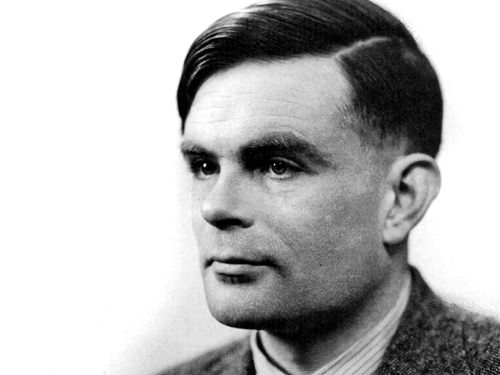
For the Empire
Turing’s life starts out during the 1920s in Britain. It’s a time when the demands of social class, church, and service to the great British Empire rule. Turing was passionate about other things though, like science, which embarrassed his mother greatly. She had hoped he would study the classics and pursue the path of a “gentleman.”
For Turing, science was an extracurricular passion where he could fully express his original ideas and discover the natural wonders of the world. At the age of 12 h, became fascinated with “using the thing that is commonest in nature with the least waste of energy.” He spent years chasing after the fundamental questions of existence and the inner workings of the human mind. But this is the 1920s we’re talking about, and the headmaster of his school gravely reported, “If he is to be solely a Scientific Specialist, he is wasting his time at a Public School.”

Turing’s mind was finally allowed to shine when he began his undergraduate studies at King’s College, Cambridge. In 1933 he began to dabble in the realm of mathematical logic, where he tackled a question that still hadn’t been answered:
Does there exist a method that could determine whether any mathematical statement is true?
To answer such a question, Turing presented his work on his Turing Machine. A machine that would be able to calculate anything calculable. It was the blueprint for today’s modern computers, except Turing conceptualized the entire idea in his head without ever seeing one.
The Father of the Modern Computer
The Turing Machine introduced the concept of a Universal machine. When we say machine, we aren’t talking about a specific device, but something more general like a formula or an algorithm. There are many formulas or equations in existence, which can be applied to solve a variety of problems. The Turing Machine was no different, consisting of a limitless memory that could take any set of instructions (an algorithm), and carry out a mechanical process to calculate it. This machine didn’t just solve one algorithm; it could solve all of them.
It was the One Machine for all calculable problems. The computer as we know it today.
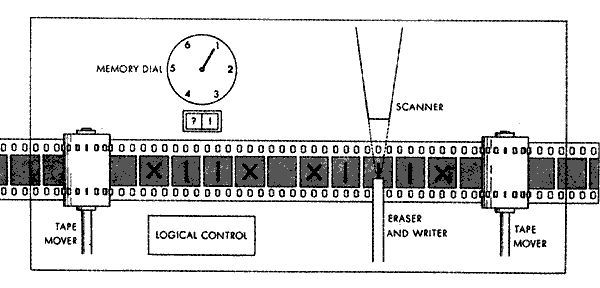
These days the Turing Machine is alive and well all around us, from our desktop computers to the phones in our pockets. The Turing Machine built the foundational logic principles for how all of our devices work as Universal machines that can tackle any defined task through a set of instructions in a program.
This invention was so groundbreaking that Time Magazine included Turing as one of the century’s greatest minds in 1999. As they report,
“The fact remains that everyone who taps at a keyboard, opening a spreadsheet or a word-processing program, is working on an incarnation of a Turing machine.”
The Drumbeat of War
Turing’s groundbreaking work that would shape an entire computing generation was out of the way, but his story was just getting started. On September 3rd, 1939, Britain officially declared war on Germany to begin World War 2. It’s during this time that Turing takes up a position at the wartime cryptanalytic headquarters at Bletchley Park, Buckinghamshire. It’s here that top secret work is being done to crack military codes being used by Germany. Turing is the man to solve it.
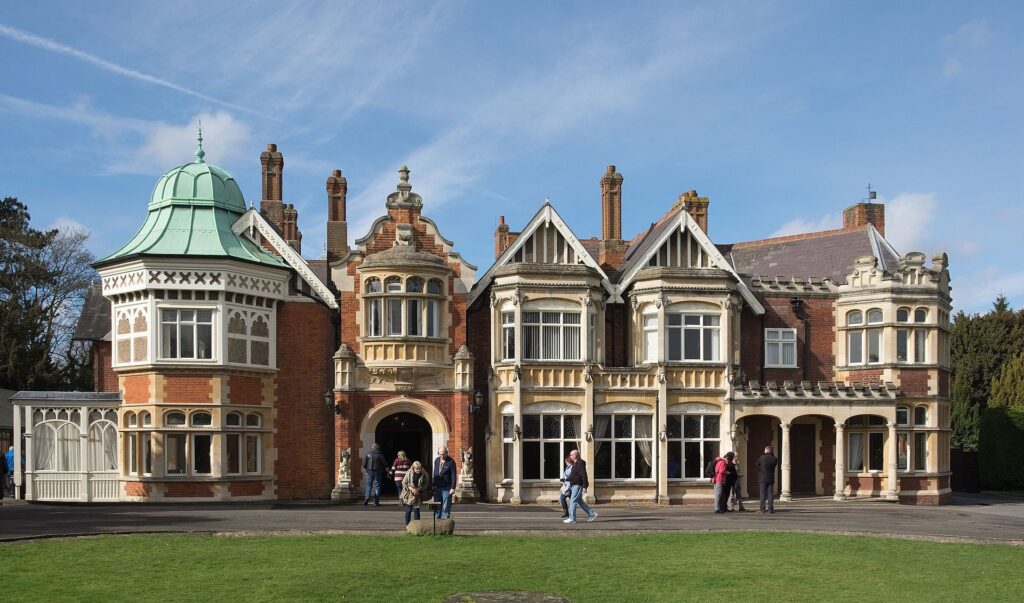
The main focus of Turing’s work was cracking the German Enigma code. This was an enciphering machine used by the Germans to send messages about the location of armed forces and U-boats. Polish mathematicians had already solved the issue of how to read an Enigma message, but the Germans were changing their cipher system daily. It was up to Turing and his team to develop a machine that could keep up with the rapid changes.
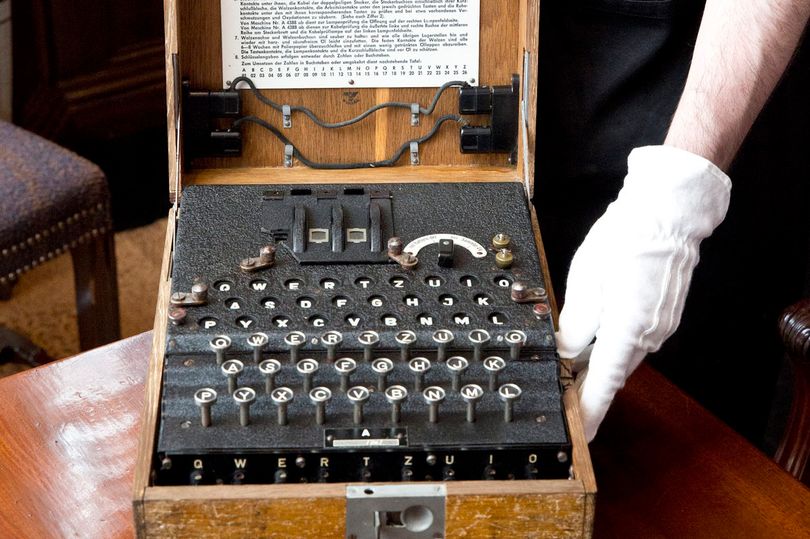
Working alongside colleague Gordon Welchman, Turing developed an electromechanical machine called the Bombe. This device helped to decrypt the German Enigma transmissions successfully, and from the 1940s on German Air Force communications were being decoded at Bletchley.

Turing also had the task of decrypting advanced German naval communications that had left other cryptologists baffled. He developed a method called Banburismus that allowed all encrypted German naval signals to be readable. With this feat, Allied ships could successfully steer away from German U-boat attacks, which helped turn the tide of battle in the Atlantic.
According to some historians and the great Winston Churchill, Turing’s work at Bletchley helped to shorten the war in Europe by as many as two to four years. Imagine the lives saved as a result of Alan Turing’s work.
Setting the Stage for AI
With World War 2 drawing to a close, Turing starts to turn his sights into artificial intelligence (AI). He births the machine that could solve complex mathematical problems, but how would the world measure this intelligence? A test was needed.
In 1950 Turing publishes the paper “Computer Machinery and Intelligence” which tackled the concept of artificial intelligence and what’s now known as the Turing Test. This test is still used today to determine how far AI has advanced. It states that for a computer to truly think, it has to fool a human observer into thinking it’s human. This test was reportedly passed by a computer program called Eugene Goostman in 2014. However, some artificial experts are contesting the victory, and we’re still left waiting for a more capable contender.
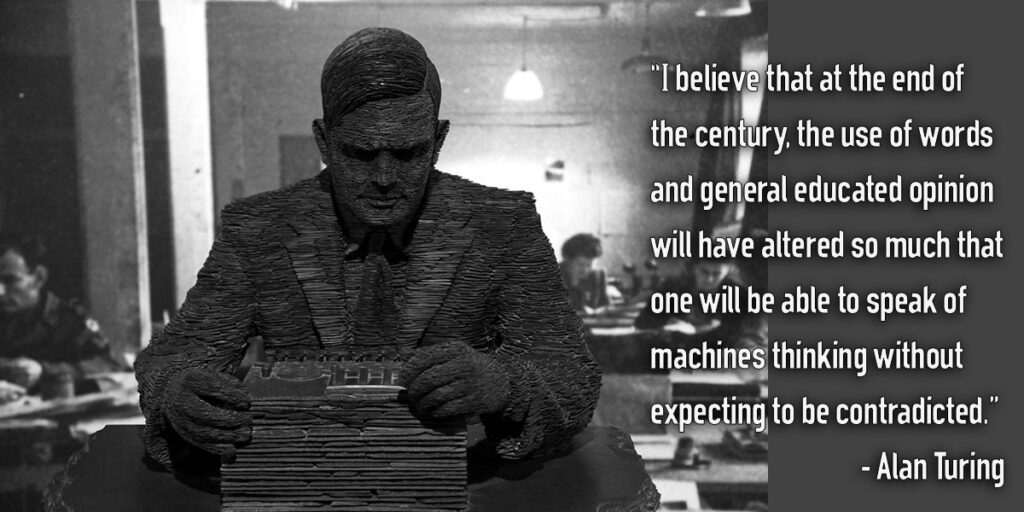
By this stage in Turing’s life, he has done some fantastic work. It’s incredibly challenging to articulate just how groundbreaking his achievements have been in a world where computers are taken for granted. Just to drive the point home, without Alan Turing, there would very likely be no computer.
In 1954, Turing was found dead next to a half-eaten apple. The cause of death? Cyanide poisoning. Alan Turing had taken his own life at the young age of 41.
Turing Lives On
When Turing died, his contributions disappeared into obscurity. It wasn’t until the 1970s when the top secret work he did at Bletchley Park was unveiled.
Today, Turing’s achievements in the world of computer science are widely known and acknowledged. The Turing Award is given every year to an individual that makes a lasting technical contribution to the computer science field. There’s also the Turing Test, still waiting for the first artificial intelligence to have us all fooled.
On a more personal note, I still remember the day I got my first computer at the age of 12, CRT monitor and all. I’ll never be able to describe the magic of peering into this new digital world. I designed my first circuit board, not with tape and mylar, but in my first EDA tool – EAGLE. Computers have transformed my life, and Turing made it possible.
Thank you, Alan Turing, your contributions are still hard at work.